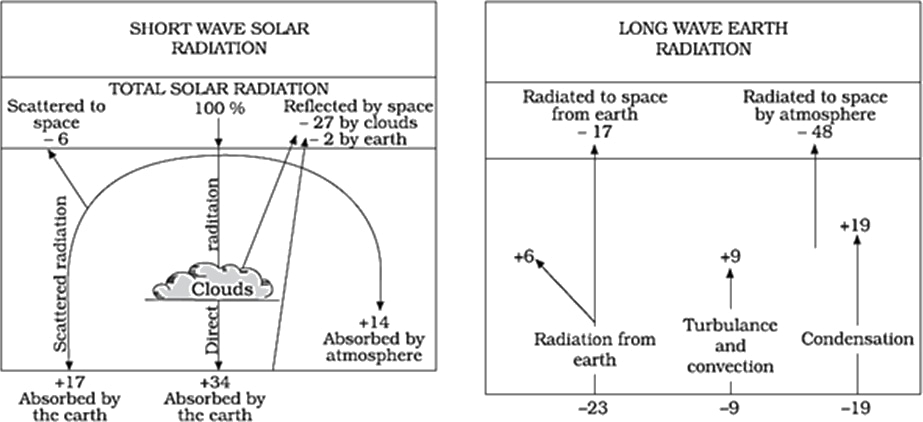- Filter By :
- Geography
- History
- Indian Heritage & Culture
- Indian Society
-
Q. Discuss the term heat budget and how it impacts the temperature in the earth's atmosphere.
02 Apr, 2021 GS Paper 1 GeographyApproach
- Start the answer by defining what is the heat budget of the earth.
- Discuss the mechanism of the heat budget with a suitable diagram and how it impacts the temperature of the earth.
- Conclude Suitably.
Introduction
The earth receives a certain amount of Insolation (short waves) and gives back heat into space by terrestrial radiation (longwave radiation). Through this inflow and outflow of heat, the earth maintains a constant temperature and this phenomenon is referred to as the heat budget of the earth.
Body
The Sun doesn’t heat the Earth evenly. Because the Earth is a sphere, the Sun heats equatorial regions more than polar regions. The atmosphere and ocean work non-stop to even out solar heating imbalances through evaporation of surface water, convection, rainfall, winds, and ocean circulation.
This coupled atmosphere and ocean circulation maintain the temperature on earth in the following ways:
- The climate’s heat engine must not only redistribute solar heat from the equator toward the poles but also from the Earth’s surface and lower atmosphere back to space.
- When the flow of incoming solar energy is balanced by an equal flow of heat to space, Earth is in radiative equilibrium, and global temperature is relatively stable.
- Regions within the equator and 40° N and S latitudes receive abundant sunlight and hence they are energy surplus regions. Regions beyond 40° N and S latitudes lose more heat than that gained from sunlight and hence they are energy deficit regions.
- The atmosphere (planetary winds) and the oceans (ocean currents) transfer excess heat from the tropics (energy surplus region) towards the poles (energy deficit regions) making up for heat loss at higher latitudes.
- Most of the heat transfer takes place across the mid-latitudes (30° to 50°)[more while studying jet streams and cyclones], and hence much of the stormy weather is associated with this region.
- Thus, the transfer of surplus energy from the lower latitudes to the deficit energy zone of the higher latitudes maintains an overall balance over the earth’s surface.
Conclusion
Sun is the ultimate source of heat. And the differential heat received from the sun by different regions on earth is the ultimate reason behind all climatic features. So understanding the patterns of distribution of temperature in different seasons is important for understanding various climatic features like wind systems, pressure systems, precipitation, etc.
To get PDF version, Please click on "Print PDF" button.
Print PDF






